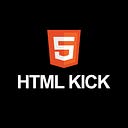Ionic is an open-source UI toolkit for building performant, high-quality mobile and desktop apps using web technologies — HTML, CSS, and JavaScript — with integrations for popular frameworks like Angular, React, and Vue.
- 1. What is Ionic Framework?
- 2. What do you need to learn Ionic?
- 3. Is Ionic the best framework?
- 4. What is lazy loading as used in Ionic?
- 5. What is the popular mobile application built using the Ionic framework?
- 6. How do you test Ionic apps?
- 7. Differentiate between Ionic prepare and Ionic build
- 8. Does the Ionic framework have storage types?
- 9. What is the Ionic market?
- 10. What are the basic Ionic components?
- 11. What are the advantages of the Ionic framework?
- 12. State the disadvantages of the Ionic framework
- 13. What are native apps?
- 14. What role does AngularJS play in Ionic applications?
- 15. What are mobile web apps?
- 16. What are hybrid apps?
- 17. What are page life-cycle events?
- 18. What is web view, and what it’s importance?
- 19. What are promises in Ionic?
- 20. What’s the latest Ionic framework version, and what’s unique about it?
- 21. What are AOT and JIT
- 22. What is the capacitor in Ionic?
- 23. How can you transfer data between Ionic pages?
- 24. What is the router link directive?
- 25. Who created the Ionic framework?
- 26. What’s an <ion-app>?
- 27. How can you improve Ionic mobile app performance?
- 28. Can you use Firebase with Ionic?
- 29. Compare Ionic and Apache Cordova.
- 30. What is Ionic CLI?
